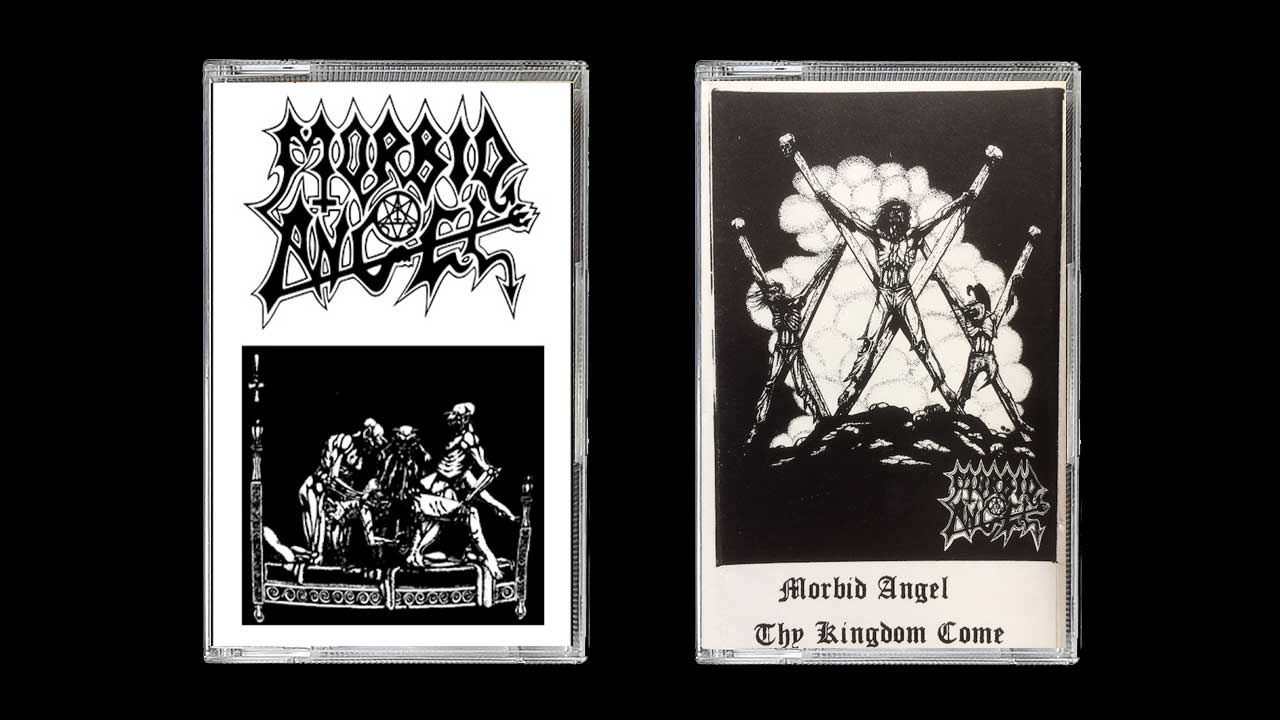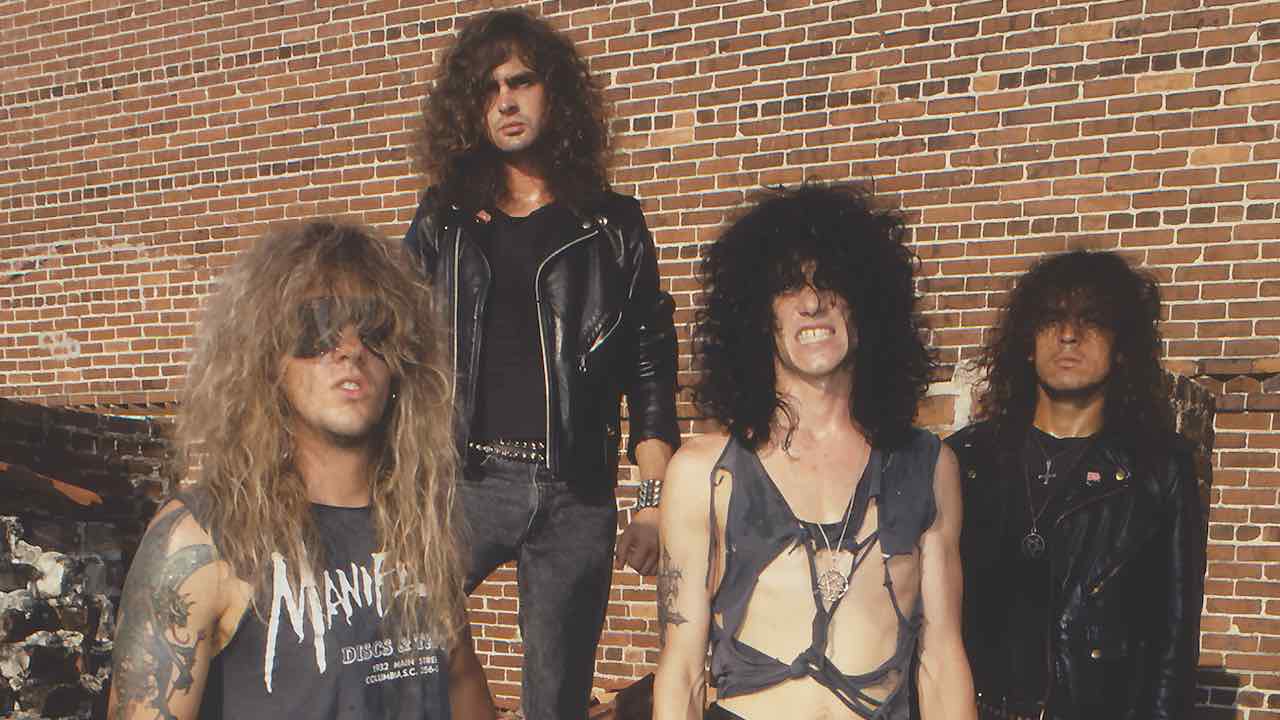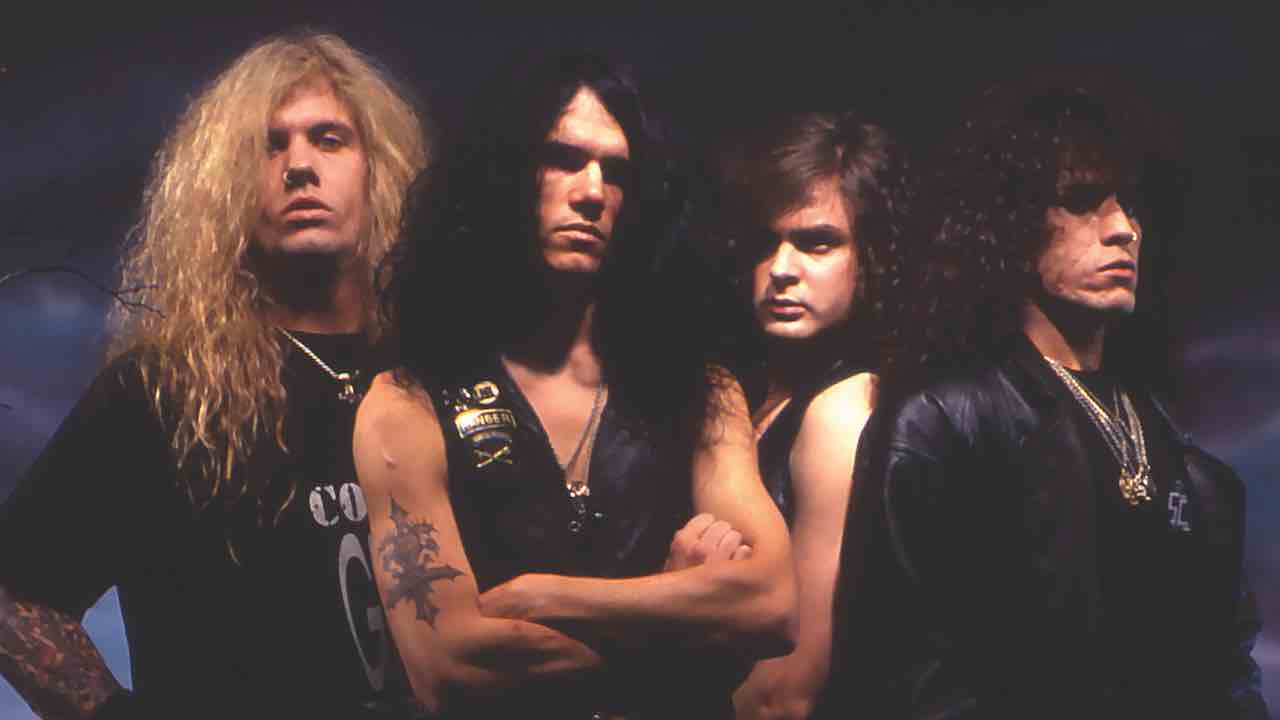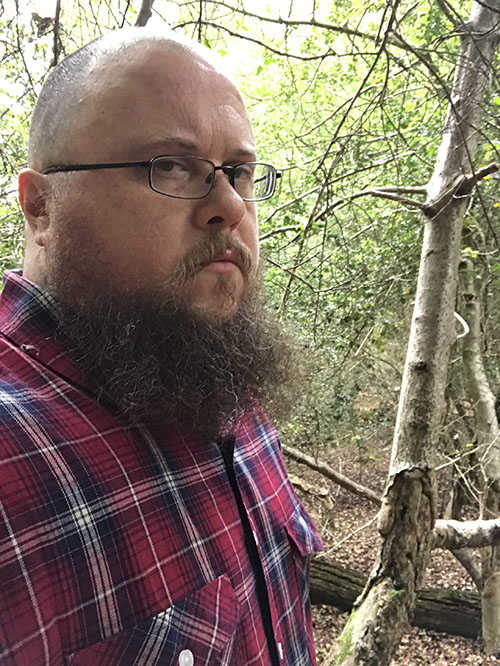For metal, 1983 was the year shit really got dark. Thrash was born, Metallica and Slayer debut albums setting new standards of intensity that a slew of ravening hopefuls instantly sought to outdo. In San Francisco’s Bay Area, the crucible of thrash, a gang of pimply teens named Possessed were tinkering around with the term ‘Death Metal’ as a good name for a demo. This organic genre moniker – and the intense, oppressive, gore-sodden sound that it describes – slowly caught on in odd pockets of the USA as 1983 progressed: Master emerged in Chicago, and Necrophagia in Ohio, while in sunny Florida a brace of future scene leaders assembled in sweltering jam rooms to destroy all remaining boundaries of taste and velocity.
In Orlando, 16-year-old video nasty enthusiast Chuck Schuldiner formed Mantas (becoming Death a year later), whose muffled rehearsal tapes would have disproportionately transcendent consequences. Over in Tampa, 18-year- old guitar whizz-kid George Emmanuel III – soon to be the self-styled Trey Azagthoth – started jamming with the only other occult-fixated metalhead in Henry B. Plant High School, drummer Mike Browning.
“We called the band Ice, like the icy winds of the abyss,” explains Mike today. “Our first show was the high school talent show. We improvised a few cover songs like Judas Priest and Scorpions.”
These were humble, familiar beginnings, but soon the fledgling band were covering Black Funeral by Mercyful Fate, Baphomet by Angel Witch and Slayer’s Black Magic. “Trey and I were into the Necronomicon,” emphasises Mike, “so we started performing rituals to conjure these entities and the music really changed. We became the mouthpiece for those entities, and from that point on it was all about making music that would please these gods. It was like they gave us the ability to play things that were pleasing to them and that was all that we cared about. It consumed us.”
Trey put Ice on, er, ice when he moved across state, soon joining a band called Death Watch and bringing Mike into the fold. Mike recalls Trey’s first original song coming together: “Probably the first one I ever learned was called Dying In The Dead Zone. There is a bootleg recording out there floating around with some Death Watch songs on it.” With only one citation online, this Death Watch tape must represent the rarest Morbid Angel-related material in existence.

By the end of 1983, Trey had settled on another name, Heretic – which was soon abandoned when an identically monikered band emerged in LA. When a friend told Trey that his music sounded “morbid”, the lightbulb moment occurred and, as Morbid Angel, the foursome started forging connections with likeminded Floridians.
“Trey was doing all the mail and tape trading back then, so he was more into the newer bands than I was,” says Mike. “But all of the local bands like Executioner [later Obituary], Nasty Savage, Mantas and Ravage we all knew and played shows with. We were the only real occult band though, everyone else was more image than real, so we were in our own little class.”
Tape trading, the pre-internet file- sharing social media phenomenon, was just entering its golden age as hundreds of kids in bands with boomboxes and jiffy bags sent their home recordings across the world, each attempting to one-up the last aggro racket, and launching a grass roots musical movement that continues to this day.
“Metal was always about oneupmanship, right?” says Roadrunner Records A&R man Monte Conner, thanked on the inlay of Morbid Angel’s 1987 demo, Thy Kingdom Come. “How to play it faster and heavier and make it more evil… You had speed/thrash metal taking it all to new speeds. So how do you top that? You add in death metal vocals and make it sound even heavier and more evil.”
Although Evil Chuck was writing tons of sick Death riffs, Morbid Angel soon proved the most magisterial presence on the Florida scene, even while hacking through a variety of frontmen. Their first bassist, Dallas Ward, and second guitarist, Richard Brunelle, were variously drafted in on vocals, as were a girlfriend of Trey’s called ‘Evilynn’, Charles from Death Watch, and a “much older man” named Kenny Bamber (“He owned a huge PA and light system and he said he could sing like King Diamond,” recalls Mike), who squawked his way eccentrically through a two-track demo in 1985 before being dropped.
By early ’86, Mike had taken vocal duties, simultaneously drumming to some of the most demandingly extreme metal yet created. “We didn’t want to try out more people, because we knew what we wanted,” reasons Mike. “So I said I’d try it, because I already knew all the words and had the ability to sing with the intent to make them work and be real about it. We didn’t want someone just up there singing empty words with no intent behind them.”
There’s footage on YouTube of this line-up playing a bar in Rocky Point Beach, Tampa, in 1986, and it’s mind- blowing, especially Trey’s singular approach to summoning ancient deities via six-string. Early promo material stated that Trey was a “reincarnated demon”, and beholding the man’s orgiastic, hallucinogenic approach to guitar playing at this early stage, the claim seems entirely plausible.
The first label to take an interest in the newcomers was a fledgling indie named Goreque Records, run by a guy in North Carolina named David Vincent. David financed and produced what was intended to be their debut album, Abominations Of Desolation, ensuring this line-up’s volatile chemistry was committed to tape for posterity. Even so, there was concern that these recordings hadn’t fulfilled the band’s potential: “It’s hard to recall what my reaction was but I must have not been overwhelmed,” reckons Monte Conner, “as I didn’t try to sign the band until I heard the Altars Of Madness album.”
In US fanzine Deathcheese in 1991, Trey gave his feelings on the recording: “It wasn’t up to standards, and I learned a lot from that,” he asserted. “A debut album is gonna mark you for life… It was not good enough.”
Certainly, tumultuous genre classics such as Chapel Of Ghouls, Angel Of Disease and Unholy Blasphemies later found optimum shape across the band’s first three proper albums, with increased velocity and craftsmanship. But whatever the merits of that tentative debut, soon after its recording Morbid Angel fell apart, losing bassist John Ortega and co-founder Mike Browning. At the time Trey told Slayer Mag, “[They] sucked, so I fired them,” but Mike recalls a different issue: “After I caught Trey with my girlfriend and beat him up, it was never the same again.”
Abominations Of Desolation was shelved (gaining official release in 1991), the band in tatters. David Vincent helped Trey put together a new line-up, recommending drummer Wayne Hartsell, bassist Sterling Von Scarborough and singer Michael Manson. The latter pair lasted about as long as was the norm for Morbid bassists and singers, so at last Mr Vincent himself assumed both roles, his imposing stature, four-string dexterity and commanding growl gifting Morbid Angel the charismatic frontman they needed to attain the next level.
With this savvy operator at the helm, the band recorded 1987’s Thy Kingdom Come demo, their first concerted attack on the industry, sent out to the press with a suitably lurid mission statement: “The music is torment, the force is power, the method is perfection and the result is DEATH! This is death metal the way it was meant to exist. Morbid Angel lives and dies the fever of thrash!”

Trey located the final piece of the puzzle when he heard rehearsal tapes by LA grindcore outfit Terrorizer. Knocked out by the superhuman drum barrage of Pete Sandoval, in 1988 the drummer was headhunted and flown to Florida to get to grips with some demanding new material, having to adjust to double bass drums for the first time. Pete’s capabilities took his bandmates’ breath away; as soon as he’d nailed the tempos, they played him a tune by a band using a drum machine, saying they’d found a drummer faster than him. After some more determined practise, Sandoval matched the machine beat-for-beat.
The Azagthoth/Vincent/Brunelle/Sandoval line-up was to become one of the sharpest, godliest metal bands of all time, and after six years of unstable line-ups, unappreciative labels and concerted development, proper debut Altars Of Madness attained legendary status as soon as it came out. The occult focus – decidedly unfashionable in a late-80s metal environment obsessed with cheesy gore, nuclear war and real- world social ills – proved devilishly seductive to a new generation of extreme metalheads, and terrifying to America’s religious right. However, despite titles like Blasphemy, Lord Of All Fevers & Plagues and Bleed For The Devil, Morbid Angel repudiated accusations of Satan worship, Trey explaining his philosophy to Deathcheese zine, which still stands up as solid advice:
“The only real motive for our band is for people to do what thou wilt,” he said. “For people to think and not lump in with everybody else. Make your own decisions and don’t do things because they’re cool – do things because you honestly like them, not just because you want to fit in… Be your own master.”
Published in Metal Hammer 332
While you’re here, why not take advantage of our brilliant new subscribers’ offer? Get a digital pay monthly subscription for as little as £1.78 per month and enjoy the world’s best high voltage music journalism delivered direct to your device.

